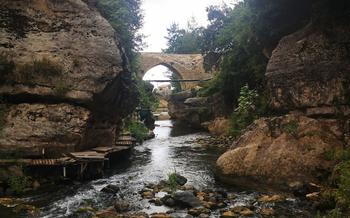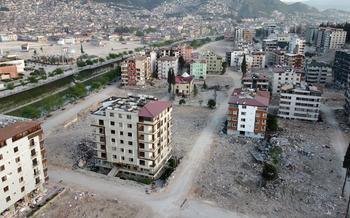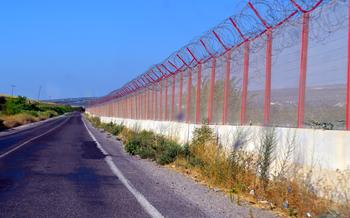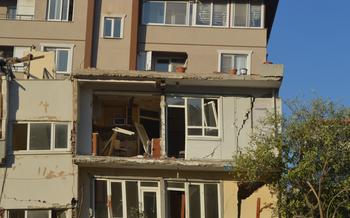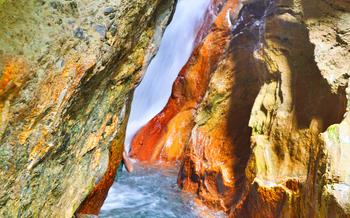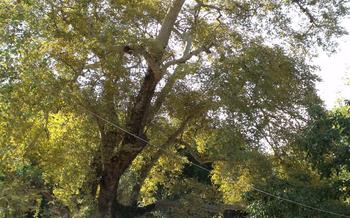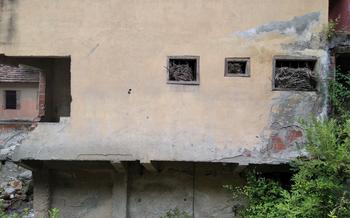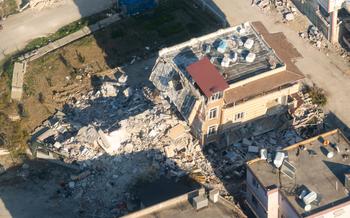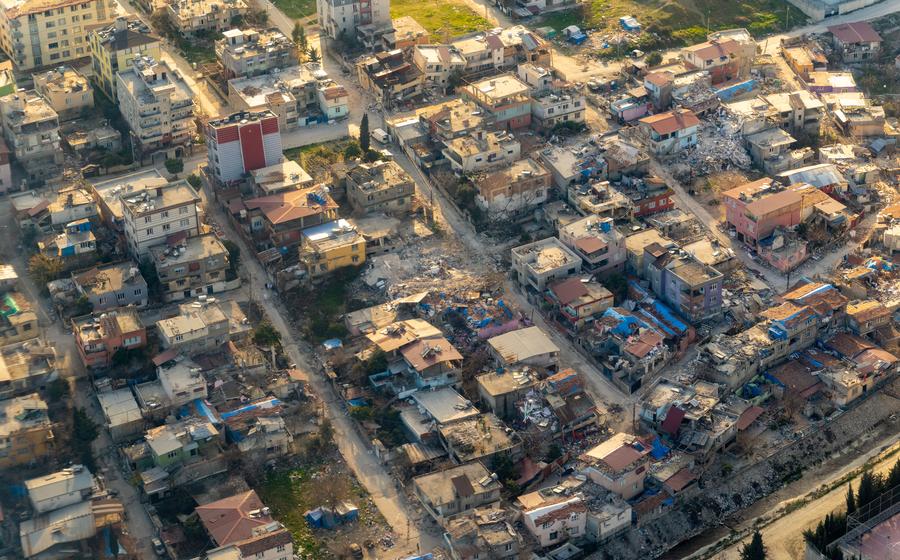
Dortyol Oil Museum
- Historical Significance
- Museum Exhibits
- Educational Programs
- Guided Tours
- Cultural Significance
- Architecture and Design
- Hours of Operation and Admission Fees
- Accessibility
- Visitor Tips
- Surrounding Attractions
- Local Cuisine
- Accommodation Options
- Transportation
- Insider Tip: Unveiling the Hidden History of Oil in Dortyol
Historical Significance
In the realm of oil exploration, Turkey holds a significant place, with its journey beginning in the early 20th century. The southeastern province of Hatay, and specifically the district of Dortyol, emerged as a pivotal player in this endeavor. The discovery of oil in Dortyol in 1954 marked a turning point, transforming the town into a hub of oil exploration and production. This momentous event not only propelled Turkey into the ranks of oil-producing nations but also laid the foundation for the country's thriving energy sector.
The Dortyol Oil Museum, established in 1988, serves as a testament to the region's rich oil history. This remarkable institution is dedicated to preserving and showcasing the legacy of oil exploration in Dortyol. Through its captivating exhibits and interactive displays, the museum immerses visitors in the fascinating world of oil, highlighting its profound impact on Dortyol's economy, culture, and society.
Museum Exhibits
The Dortyol Oil Museum houses a diverse collection of exhibits that delve into the history and significance of oil in Dortyol. Visitors can explore interactive displays that showcase the various stages of oil exploration and production, from drilling and extraction to refining and transportation. The museum's collection includes vintage drilling equipment, machinery, and artifacts that offer a glimpse into the region's rich oil heritage.
One of the highlights of the museum is a replica of an oil rig, complete with a working drill bit. Visitors can experience the thrill of oil exploration firsthand as they learn about the challenges and techniques involved in extracting oil from deep underground. The museum also features a collection of vintage oil tankers and pipelines, providing insights into the transportation and distribution of oil to various parts of the country.
Interactive exhibits at the Dortyol Oil Museum allow visitors to engage with the subject matter in a hands-on manner. They can operate miniature oil rigs, simulate the process of refining crude oil, and learn about the various products derived from this valuable resource. The museum's exhibits are designed to educate and entertain visitors of all ages, making it an ideal destination for families and school groups.
Educational Programs
The Dortyol Oil Museum offers a range of educational programs and workshops designed to promote knowledge and awareness about oil and its history. These programs are tailored to different age groups and interests, providing an immersive and interactive learning experience for visitors.
School groups can participate in guided tours and workshops that focus on the science and technology of oil exploration and production. Students learn about the different stages of oil exploration, from drilling and extraction to refining and transportation. They also get hands-on experience with interactive exhibits and experiments that demonstrate the properties and uses of oil.
The museum also offers specialized workshops for adults and professionals in the oil and energy industry. These workshops cover topics such as oil exploration techniques, reservoir management, and environmental sustainability. Participants gain insights from industry experts and have the opportunity to network with peers and colleagues.
To enhance community engagement, the Dortyol Oil Museum organizes outreach programs and events throughout the year. These events include lectures, seminars, and exhibitions that explore the cultural and historical significance of oil in the region. Visitors can interact with experts, participate in discussions, and learn about the latest developments in the oil industry.
The educational programs at the Dortyol Oil Museum play a vital role in promoting knowledge and understanding about oil and its impact on society. By fostering a culture of learning and inquiry, the museum contributes to the development of a skilled and informed workforce in the oil and energy sector.
Guided Tours
The Dortyol Oil Museum offers guided tours to provide visitors with a comprehensive and engaging experience. These tours are led by knowledgeable guides who share insights into the history, significance, and stories behind the museum's exhibits. Visitors can choose from different tour options, including group tours, private tours, and self-guided tours.
Group tours are ideal for larger groups or organizations and can be customized to meet specific interests or requirements. Private tours offer a more personalized experience for individuals or small groups, allowing for in-depth discussions and tailored explanations. Self-guided tours are suitable for independent travelers who prefer to explore the museum at their own pace, with the assistance of informative signage and interactive exhibits.
The benefits of taking a guided tour at the Dortyol Oil Museum are numerous. Visitors gain valuable insights from experienced guides who can provide historical context, technical explanations, and personal anecdotes related to the exhibits. Guided tours also allow visitors to ask questions, clarify doubts, and receive personalized recommendations for further exploration.
To book a guided tour, visitors can contact the Dortyol Oil Museum in advance to check availability and make reservations. The museum offers flexible scheduling to accommodate different visitor preferences and group sizes. Fees for guided tours may vary depending on the type of tour and the number of participants.
Cultural Significance
Oil has played a pivotal role in shaping the cultural tapestry of Dortyol and the surrounding region. The discovery and subsequent extraction of oil have transformed the local economy, bringing prosperity and development to the area. This economic growth has led to a vibrant and diverse culture, with a unique blend of traditional and modern influences.
The influence of oil is evident in the local cuisine, with many dishes incorporating ingredients derived from the petroleum industry. Traditional recipes have been adapted to include unique flavors and aromas, creating a culinary experience that is both distinctive and delicious.
The region is also home to a number of festivals and events that celebrate the history and heritage of oil. These events showcase the cultural significance of oil and provide a platform for locals and visitors to come together and share their stories and traditions.
The Dortyol Oil Museum plays a crucial role in preserving and promoting the cultural heritage of the region. Through its exhibits and educational programs, the museum sheds light on the profound impact that oil has had on the lives and livelihoods of the people of Dortyol. By showcasing the history and significance of oil, the museum helps to ensure that the cultural heritage of the region is not forgotten and that future generations can appreciate the legacy of this vital resource.
Architecture and Design
The Dortyol Oil Museum is housed in a striking and distinctive building that reflects its unique purpose and history. The building's design is a blend of modern and industrial styles, showcasing the museum's focus on oil and energy while maintaining a contemporary aesthetic. The exterior features a sleek and minimalist facade, complemented by large windows that allow natural light to flood the interior spaces. The use of glass and metal in the building's construction creates a sense of transparency and openness, inviting visitors to explore and discover the treasures within.
The interior of the museum is equally impressive, with spacious exhibition halls, interactive displays, and thoughtfully curated exhibits. The layout of the museum is designed to facilitate a logical flow of visitors, guiding them through the history of oil exploration and its significance in Dortyol. The use of multimedia and interactive technology enhances the visitor experience, making the exhibits engaging and accessible to people of all ages and backgrounds.
One of the highlights of the museum's architecture is the central atrium, which serves as a gathering space for visitors and events. The atrium features a stunning skylight that floods the space with natural light, creating a bright and airy atmosphere. The use of exposed steel beams and pipes in the atrium's design adds an industrial touch, reinforcing the museum's connection to the oil industry.
Overall, the architecture and design of the Dortyol Oil Museum complement and enhance the visitor experience, creating a space that is both visually appealing and educationally enriching. The building's unique style and thoughtful design reflect the museum's commitment to preserving and showcasing the history of oil in Dortyol and the surrounding region.
Hours of Operation and Admission Fees
The Dortyol Oil Museum welcomes visitors throughout the week, except on Mondays when it remains closed. The operating hours for the museum are from 9:00 AM to 5:00 PM, providing ample time for exploration and learning.
Admission to the Dortyol Oil Museum is quite affordable, allowing visitors to enjoy a budget-friendly educational experience. The general admission fee is set at a reasonable rate, and students, seniors, and groups can avail of discounted rates.
To ensure a seamless visit, the museum offers both online booking and on-site ticket purchase options. Visitors can conveniently book their tickets in advance through the museum's website or purchase them directly at the museum's ticket counter.
It's worth noting that the museum experiences seasonal variations in visitor traffic. Peak seasons, typically during the summer months, may attract larger crowds, so planning a visit during the off-peak season can provide a more relaxed and less crowded experience.
Accessibility
The Dortyol Oil Museum is committed to providing an inclusive and welcoming environment for all visitors, regardless of their abilities. The museum is wheelchair accessible, with ramps and elevators available to navigate the different levels of the building. Visitors with hearing impairments can request assistive listening devices, while those with visual impairments can take advantage of tactile exhibits and descriptive audio tours. The museum staff is trained to assist visitors with disabilities, ensuring a comfortable and enjoyable experience for everyone. The museum's dedication to accessibility reflects its commitment to promoting inclusivity and ensuring that all visitors have the opportunity to learn about the history and significance of oil in Dortyol.
Visitor Tips
When planning your visit to the Dortyol Oil Museum, consider the following tips for an enjoyable and enriching experience:
- Aim to visit during the shoulder seasons (spring or autumn) to avoid the summer crowds and enjoy milder weather.
- Dress comfortably in layers, as the museum's temperature can vary.
- Photography is allowed in most areas of the museum, but flash photography is prohibited to protect the exhibits.
- The museum offers a small cafe where you can grab a bite to eat or a refreshing drink. Alternatively, you can find several restaurants within a short walk of the museum.
- If you're traveling with children, check out the museum's educational programs and activities designed to engage young minds.
- Plan to spend at least two to three hours exploring the museum's exhibits and displays.
- Consider joining a guided tour to gain insights from knowledgeable guides and learn more about the history and significance of oil in Dortyol.
- Combine your visit to the Dortyol Oil Museum with other attractions in the area, such as exploring the historic city center, visiting the local markets, or taking a day trip to the nearby beaches or ancient ruins.
Surrounding Attractions
In addition to the Dortyol Oil Museum, Dortyol and its surroundings are home to various historical, cultural, and natural attractions that visitors can explore. The city itself boasts several ancient ruins and archaeological sites, including the remains of a Roman amphitheater and a Byzantine church. Visitors can also visit the Dortyol Ethnography Museum, which showcases the region's rich cultural heritage through traditional costumes, artifacts, and handicrafts.
Just a short drive from Dortyol, visitors can explore the stunning landscapes of the Amanos Mountains, which offer breathtaking views, hiking trails, and opportunities for wildlife spotting. The region is also home to several natural hot springs, where visitors can relax and rejuvenate in the warm, mineral-rich waters.
For those interested in history, the nearby city of Antakya, the ancient Antioch, is a must-visit. As one of the oldest cities in the world, Antakya is home to numerous historical sites, including the Church of St. Peter, the Great Mosque of Antakya, and the Antakya Archaeological Museum.
To explore the region's natural beauty, visitors can head to the Karasu River, which offers scenic boat trips and opportunities for swimming, fishing, and picnicking. The river is surrounded by lush forests and offers stunning views of the surrounding mountains.
Transportation options to explore these surrounding attractions are readily available. Visitors can rent a car, hire a taxi, or take advantage of the local public transportation system, which connects Dortyol with nearby towns and cities.
Local Cuisine
In the heart of Dortyol, visitors can immerse themselves in a delectable culinary journey that showcases the region's rich flavors and traditions. The local cuisine is a symphony of fresh ingredients, aromatic spices, and time-honored recipes that have been passed down through generations. From the tantalizing scent of freshly baked bread to the mouthwatering taste of grilled meats and savory stews, Dortyol's cuisine is a true feast for the senses.
For a truly authentic experience, visitors must try the traditional dish of "Kiymali Ekmek," a flavorful flatbread topped with minced meat, vegetables, and tangy spices. Another local favorite is "Testi Kebab," a succulent lamb dish slow-cooked in a clay pot, unleashing a burst of flavors with every bite.
Vegetarians and vegans will find a delightful array of options to satisfy their taste buds. The region's fertile lands produce a bounty of fresh fruits, vegetables, and legumes that are transformed into colorful salads, hearty soups, and flavorful stews.
To fully embrace the local culinary experience, visitors can venture into the bustling markets, where they can haggle for fresh produce, aromatic spices, and handmade delicacies. The vibrant atmosphere, the friendly banter of the vendors, and the sheer variety of goods on display create a truly immersive experience that transports visitors to the heart of Dortyol's culinary culture.
Whether it's savoring the smoky flavors of grilled kebabs, indulging in the comforting warmth of stews, or simply enjoying the freshness of seasonal fruits, Dortyol's cuisine is a journey of discovery that will leave visitors with lasting memories and a newfound appreciation for the region's culinary traditions.
Accommodation Options
When planning your stay in Dortyol, you'll find a range of accommodation options to suit different budgets and preferences. For a comfortable and convenient experience, consider booking a room at one of the several hotels located near the Dortyol Oil Museum and other attractions. These hotels offer a variety of amenities, including modern rooms, room service, and easy access to the city's main attractions.
If you prefer a more budget-friendly option, guesthouses and apartments are available throughout Dortyol. These accommodations provide a cozy and homely atmosphere, allowing you to immerse yourself in the local culture. Many guesthouses are family-run, offering a personalized experience and the opportunity to learn about the region's history and traditions from the locals.
For those seeking a unique and authentic stay, consider booking a room in a traditional Turkish house or a restored Ottoman mansion. These accommodations offer a glimpse into Turkey's rich architectural heritage and provide a truly memorable experience.
Remember to book your accommodation in advance, especially if you're visiting during the peak tourist season, to secure the best rates and availability. Online booking platforms and travel agents can assist you in finding the perfect place to stay during your visit to Dortyol.
Transportation
Reaching Dortyol is relatively easy, with multiple transportation options available. The city is well-connected by air, with flights operating from major cities in Turkey and abroad. Dortyol Airport (DHT) is located approximately 10 kilometers from the city center and offers convenient access for visitors arriving by plane.
For those traveling by land, Dortyol is accessible via a well-maintained road network. The city is connected to major highways, making it easy to drive or take a bus from other parts of Turkey. Visitors can also choose to travel by train, as Dortyol has a railway station that connects it to various cities in the region.
Within Dortyol, public transportation options are readily available. Visitors can utilize the local bus network to navigate the city and reach the Dortyol Oil Museum and other attractions. Taxis are also widely available, providing a convenient and comfortable mode of transportation for exploring the city.
For those seeking a more independent mode of transport, car rental services are available in Dortyol. Renting a car allows visitors to explore the city and its surroundings at their own pace, making it easier to visit multiple attractions and hidden gems. When driving in Dortyol, it's important to be aware of local traffic regulations and drive cautiously, especially in busy areas.
Insider Tip: Unveiling the Hidden History of Oil in Dortyol
As you embark on your journey through the Dortyol Oil Museum, keep an eye out for the "Secret Chamber of Oil History." This hidden gem, tucked away within the museum's depths, offers a glimpse into the untold stories and forgotten relics of oil exploration in Dortyol. Here, you'll find rare photographs, personal diaries, and vintage equipment that paint a vivid picture of the pioneers who shaped the region's oil industry. The Secret Chamber is a treasure trove for history buffs and oil enthusiasts alike, offering a unique perspective on the rich heritage of Dortyol's oil legacy.
